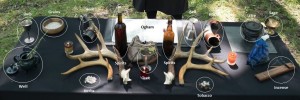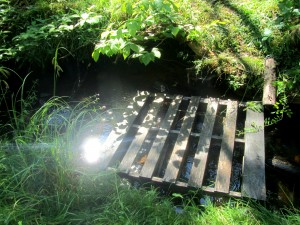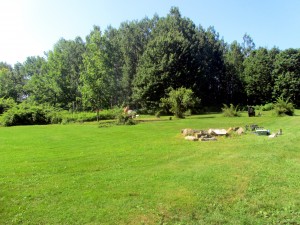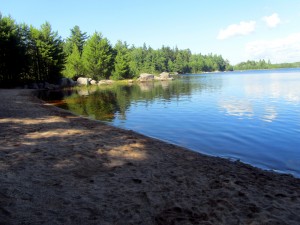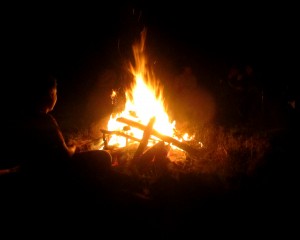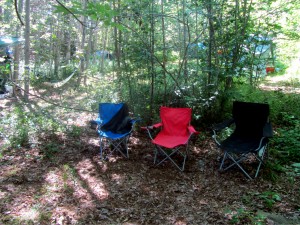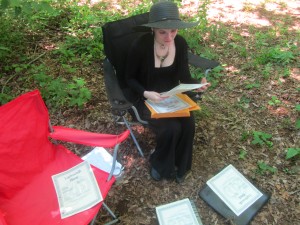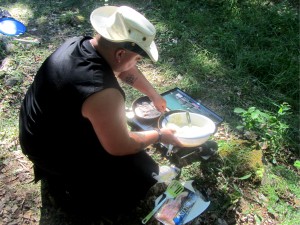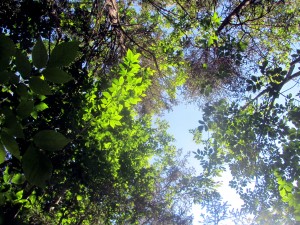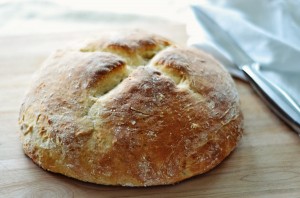
BLOG
Altar Layout
It can be challenging to find altar layouts and especially hard to find them with pictures. This layout is based one the ADF Druid 1.1.1 Documents and has been our standard for some time. Almost every item on the table has a very specific purpose and is called for at the beginning of each Ritual in the Setup.
Enjoy!
Tip: Click on the image to make it bigger :)
Open Meet and Greet
Come one, come all (and bring a friend) to the Halifax Central Library
Monday, August 24th, 2015 from 6 -8pm on the 5th floor at the Pavia Coffee House
Spring Garden Rd
Halifax, NS B3J 1E9
Canada
Please click below for a map
Closing Rituals
A couple weeks ago before the Grove attended AEGIS we were informed that no one had offered to do the Closing Ritual.
Thinking it couldn’t be that hard to write something and find sources we volunteered and began the arduous process of looking around for ideas…. Everyone had something to contribute but we would have to make it ADF format AND we wanted it to be interactive for the guests. After two weeks of not finding anything at all online or from the other Groves and Groups we decided to go out on a limb and throw something together.
Let me tell you… we had a ball. It all went off without a hitch and everyone seemed to really enjoy it.
We handed out copies of the Processional Chant, We Approach the Sacred Grove and had everyone sing along while we purified the space and guests. In the end (you wont see this in the written document) we closed a circle that had been left open by the Opening Ritual. Although circle casting is not a Druid tradition we felt it was a nice tie back and gave everyone a sense of completion and closure.
Let me elaborate a little more on that so you can get the experience…. Day one of the festival the wonderful Mave led an eclectic opening ritual and had everyone hold hands. From there, everyone turned to the person on their left and with hands clasped touched from heart to heart while saying “From my heart to your heart, the circle is open”. At the end of her Ritual she explained that she would leave the circle open to promote the full experience of the weekend retreat. It was a nice touch.
To make it easier for you at home and hopefully for others who find themselves in similar boats we decided to post our ritual (formatted to Grove and ADF standards).
I hope you enjoy and please email in if you have any questions.
AEGIS 2015
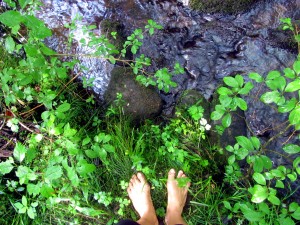

We were fortunate this Lughnasadh in that most of the Grove was able to make the trip down to the beautiful Annapolis Valley to celebrate together, as a family and as part of a larger community, at the annual AEGIS Pagan Festival & Spiritual Retreat.
This year’s festival theme was “The Wild Hunt”, which was reflected in the activities, feasts, and rituals. The GNSD was well-represented throughout the festival, participating in numerous rituals, stepping up to perform a number of volunteer duties, engaging in many a conversation, and taking home three “Golden Pine Cone Awards”.
Overall, the AEGIS Festival proved a time for…
Connecting with old friends and meeting new, deep spirituality, bug spray, coyotes, bacon bacon bacon, a sense of community, “energy”, jaunts to the beach, campfires, marshmallows, mead horns, potlucks, baby coos, trees, breezes, sunshine, bare feet, face painting, workshops, offerings, playful puppies, broken tent poles, barbed wire, chicken saute, pallet bridges, water buckets, swollen feet, “bad” cider, coffee, ice cream, cool streams, smiles, laughter, love
...and photographs (some of which you see here).
A wonderful and memorable weekend hand by all. We hope and intend to return next year.
:)
Lughnasadh: A time of Harvest & Feasting
Lughnasadh is a time of harvest and what better way to celebrate a good harvest then by having a feast! Lughnasadh feasts have been a tradition for years. Villages and families come together to share what they have gathered and enjoy all of the bounty we have worked for and that mother earth has made possible for us.
Anything that grows on your land is suitable for a feast but if you are looking to outsource a little here are some seasonal and traditional foods:
Corn Broccoli Carrots Chilies Cucumbers Fennel
Beans Onions Peas Potatoes Radishes Bilberries
Blueberries Raspberries Blackberries Redcurrants Tomatoes
Chicken Lamb And fish
Lots of options in there…
Like any high day it is always a good thing to add some bread to your meal. It can be better still if you make it by hand. The house will smell of fresh loaves and your family and guests will delight in the aroma.
Try making it by hand for an added touch. I am partial to this recipe. It has never steered me wrong and as long as you follow the directions, it can be a lot of fun.
Some interesting tips I have picked up over the years… do not make bread on a rainy or muggy day. It simply does not rise. And something else that can be fun is adding a little extra sugar to your mix and then when the bread is hot and fresh gently brushing the top with a butter and sugar mixture to give it a nice sweet taste. I mostly like this for weddings or tea parties over buns. And finally if you are really looking to get creative you can add ground and dried herbs from your garden for some added flavor. I am partial to rosemary.
Simple White Bread by Hand
Total Time: Prep: 20 min. + rising Bake: 30 min. + cooling
Makes: 32 servings
Ingredients:
- 1 package (1/4 ounce) active dry yeast
- 2-1/4 cups warm water (110° to 115°)
- 3 tablespoons sugar
- 1 tablespoon salt
- 2 tablespoons canola oil
- 6-1/4 to 6-3/4 cups all-purpose flour
Directions:
- In a large bowl, dissolve yeast in warm water. Add the sugar, salt, oil and 3 cups flour. Beat until smooth. Stir in enough remaining flour to form a soft dough.
- Turn onto a floured surface; knead until smooth and elastic, about 8-10 minutes. Place in a greased bowl, turning once to grease the top. Cover and let rise in a warm place until doubled, about 1-1/2 hours.
- Punch dough down. Turn onto a lightly floured surface; divide dough in half. Shape each into a loaf. Place in two greased 9-in. x 5-in. loaf pans. Cover and let rise until doubled, about 30-45 minutes.
- Bake at 375° for 30-35 minutes or until golden brown and bread sounds hollow when tapped. Remove from pans to wire racks to cool.
- Yield: 2 loaves (16 slices each).
Enjoy! And Blessed Lughnasadh from everyone in the Proto-Grove of Nova Scotia Druids!
Adopt a Highway
The Proto-Grove of Nova Scotia Druids will be adoption a 5km stretch of highway though the Adopt a Highway Program http://novascotia.ca/agri/wins/adopt/
We are looking for volunteers to come out and help make our planet a little cleaner. If you like to spend time in the sun and help out Mother Earth please contact us using the email below. Date is TBD in August pending a permit and group availability and we are all very excited.
Hope to see you there!
Please email karen@aperturestudios.ca to join in the fun
A Summer Solstice Tradition
Summer Solstice is a great time of year to relax and enjoy the sun (weather permitting). It is also a great time to collect and dry herbs. For me, I like to get a couple harvests out of some of my herbs but particularly my Mint Plants.
Did you know you can make your own Mint Tea? Grab yourself some baggies or better still a metal tea ball. Dry your mint and grind it up in something used only for food. I like my coffee grinder, gives me a good excuse to really clean it out. Mint can also be added fresh to ice cold summer drinks like water or mulled into fancy drinks like Mojitos.
Gathering Herbs this time of year is important. Like the sun they are at the height of their power and if they are to be used for magical purposes this will play a part. Each custom has its own suggested time to harvest. Some like to harvest first thing when the morning dew still rests on the leaves. Others prefer to go out at midnight and there are even a few who claim noon is the best time. I am partial to noon; it’s the height of the sun on the sunniest day of year? Just makes sense to me.
However you decide to do it, enjoy it. It can be a lot of fun to bundle, hang and dry what you’ve worked so hard to cultivate and now finally get to use.
Summer Solstice is a great time of year to relax and enjoy the sun (weather permitting). It is also a great time to collect and dry herbs. For me, I like to get a couple harvests out of some of my herbs but particularly my Mint Plants.
Did you know you can make your own Mint Tea? Grab yourself some baggies or better still a metal tea ball. Dry your mint and grind it up in something used only for food. I like my coffee grinder, gives me a good excuse to really clean it out. Mint can also be added fresh to ice cold summer drinks like water or mulled into fancy drinks like Mojitos.
Gathering Herbs this time of year is important. Like the sun they are at the height of their power and if they are to be used for magical purposes this will play a part. Each custom has its own suggested time to harvest. Some like to harvest first thing when the morning dew still rests on the leaves. Others prefer to go out at midnight and there are even a few who claim noon is the best time. I am partial to noon; it’s the height of the sun on the sunniest day of year? Just makes sense to me.
However you decide to do it, enjoy it. It can be a lot of fun to bundle, hang and dry what you’ve worked so hard to cultivate and now finally get to use.
Scholars eh??
It should come as no surprise to you that it can be challenging finding out information on Druidism. Anyone who has tried to look for something specific and may not have a resource such as a Grove or strong community can attest to this. What may come as a bit of a surprise is that a lot of what has been committed to writing has been done so by enemies (the Romans for example).
Amoung other things early Druids are well known for committing large sums of knowledge to memory and were regarded as scholars. Of particular value to them were the arts such as poetry and song. Learning and regaling these pieces in hopes that the Gods would be pleased and may grant gifts. So why not write it down? Good question! In his book “ Gallic Wars” Book VI, Caesar writes
It is said they (Druids) commit to memory immense amounts of poetry. And so some
of them continue their studies for twenty years. They consider it improper to entrust
their studies to writing…
The idea of course being that the regaling and passing of traditions be a right of passage and holding the knowledge a mark of status but, this makes modern study increasingly challenging. It really is a shame that did not work out…
Modern Druids are finding it increasingly important to document all proceedings. For our Grove, the ADF govern much of this and even request reports from Groves throughout the year. Many of us are creating Family Grimoires and are making contributions to a Grove Grimoire to ensure history can repeat itself. It is an uphill battle but one in which we all find strength. If you are finding this challenging please visit the ADF or OBOD website (links below). There is much to be learned and the internet is making the sharing of this information easier.
Solstice
Litha or Summer Solstice is on its way and it made me wonder…with all the different names for each holiday which is best suited (to me) and why are there so many names!? Well, to each his own but, I thought it may be interesting to discuss exactly what a “solstice” is.
A solstice is an astronomical event which occurs twice a year when the sun reaches its highest or lowest point relative to planet’s semi – axis in either the northern or southern hemisphere and that areas is most incline toward the sun. The word “solstice” itself is derived from the Latin “sol” (sun) and “sistere” (to stand still).
For us, in the northern hemisphere the Summer Solstice takes place late June. It is a time of year when the days are long and bright. The land is very fertile and warm thus we celebrate it for giving us nourishment, fertility and life.
It always boils down to being pretty simple doesn’t it J
Spreading the Ashes
 It has long been a dream of mine to have a nice fire pit in the yard, this weekend the dream was finally realized and we were able to burn the wooden archway from our handfasting ceremony. It has long since fallen over and crashed so I was happy to see it put to further use. But, this brought up the topic of what to do with the ashes…. I know Belfire ashes get spread in the garden and smudged on faces. The ashes would be sprinkled over the crops to promote growth and continue the full circle of life… but it made me wonder…how good can it be? Am I growing the right kind of crops? So I did a little research to share…
It has long been a dream of mine to have a nice fire pit in the yard, this weekend the dream was finally realized and we were able to burn the wooden archway from our handfasting ceremony. It has long since fallen over and crashed so I was happy to see it put to further use. But, this brought up the topic of what to do with the ashes…. I know Belfire ashes get spread in the garden and smudged on faces. The ashes would be sprinkled over the crops to promote growth and continue the full circle of life… but it made me wonder…how good can it be? Am I growing the right kind of crops? So I did a little research to share…
Wood ash, as oppose to coal ash, contains potassium / potash which is a vital nutrient for rich crops. The pot ash regulates the plants water balance (much as it does in humans) and makes the fruit or veggies firm and juicy. Without enough in the soil plants are susceptible to drought, frost, pests (like snails or slugs) and other diseases.
Pot ash can also be spread in the home compost (but not in green bins by HRM law) the ash is Alkaline and will raise the PH levels in your soil so sprinkle it gently rather than heaping it in. It is best used dry to maintain its potency and value.
Potash is great for crops like root vegetables, peas, beans, apple trees and soft fruit bushes. Acid loving produce like potatoes or berries do not thrive with too much potash. If you plan to use pot ash and are not sure what effect it will have it is best to test the PH of your garden and make reference to what you are growing. The see packet will have a recommended PH right alongside the sun, water and planting requirements.
Happy growing and bright blessings on your garden!

